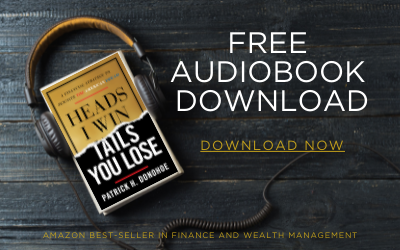Retirement isn’t the end of your financial journey—it’s the beginning of your income phase, a season of life where your values and financial decisions come together to support the lifestyle you’ve worked hard to build. Instead of focusing on downsizing or cutting back, this phase is about maintaining control, creating predictability, and preserving your wealth with intention.
Why Lifestyle Shifts Happen—and How to Prevent Them
For many retirees, the greatest surprise isn’t how much retirement costs—it’s how quickly their lifestyle begins to change. Not because of choice, but because of unintended consequences that stem from a lack of structure and foresight in their financial planning. If you’re not prepared, the comfort and consistency you enjoy today can quietly slip away.
Common Reasons People Lose Financial Ground in Retirement
Retirement lifestyle shifts often feel gradual, but they’re the result of very specific—and preventable—missteps. Here are the most common reasons retirees unintentionally compromise the lifestyle they worked so hard to build:
- Lack of a spending strategy: Without a clear, purpose-driven approach to retirement spending, many rely on gut decisions or reactive budgeting. Over time, this can lead to overspending or unnecessary cutbacks that disrupt lifestyle stability.
- Over-reliance on market-based assets: Many individuals build retirement around investments tied to market performance. When downturns hit, drawing from depreciated assets can erode wealth faster than expected—leaving less available for the long run.
- Delayed financial action: Waiting too long to start planning limits flexibility. Whether it’s starting to save late, failing to structure income sources, or ignoring wealth preservation tools, hesitation often leads to unnecessary compromise.
- Lack of income diversification: Relying on a single income stream—like Social Security or a pension—creates vulnerability. Without diversified, reliable income sources, unexpected expenses or economic shifts can quickly derail lifestyle goals.
- Misunderstanding longevity: Many underestimate how long retirement will last. A 20- or 30-year retirement requires not just accumulated savings, but a structure that sustains income and lifestyle across decades.

Your Lifestyle Mirror: Understanding Your Real Numbers
Before you can preserve your lifestyle in retirement, you have to know what it truly costs to sustain it. That means going beyond vague budget categories and taking a closer look at your actual cash flow needs—both essential and discretionary. Think of this as holding up a financial mirror: what do you really need to maintain the rhythm of life you enjoy today?
Look Beyond the Basics
Many people underestimate their retirement needs by only accounting for recurring bills. But your lifestyle isn’t defined by your utilities or groceries—it’s shaped by your values, routines, and experiences.
To begin understanding your real numbers, separate your expenses into two broad categories:
Essentials (Baseline Lifestyle)
These are the must-haves—the things that ensure day-to-day continuity and well-being:
- Housing costs (mortgage, taxes, insurance, maintenance)
- Healthcare and insurance premiums
- Groceries and utilities
- Transportation
- Personal care
Values-Driven Spending (Quality of Life)
These are the elements that give your lifestyle texture, joy, and meaning:
- Travel and leisure activities
- Hobbies and passions
- Charitable giving
- Family experiences (gifts, holidays, helping children or grandchildren)
- Wellness and enrichment (fitness, classes, memberships)
What Lifestyle Are You Really Planning For?
By aligning your spending strategy with what matters most, you avoid guessing and begin planning with intention. This process helps you:
- Identify the real cost of your preferred lifestyle
- Prioritize spending that supports your values
- Gain control without cutting back on what makes life meaningful
Creating Margin for Opportunity, Not Just Protection
Retirement planning isn’t just about avoiding loss—it’s about keeping your financial strategy agile enough to say “yes” when opportunity knocks. That’s where financial margin plays a powerful role.
When built intentionally, this margin allows you to act without disrupting your lifestyle, delaying your goals, or dipping into long-term assets.
Here’s how:
- Liquidity fuels flexibility: Tier 1 Assets like whole life insurance and annuities provide accessible capital when you need it most—without relying on the market or triggering taxes or penalties.
- Margin empowers choice: Whether it’s investing in a passion project, helping family, or taking a bucket-list trip, having financial breathing room lets you act on opportunities that align with your values.
- It’s not just a buffer—it’s a strategic asset: This kind of financial margin isn’t passive. It’s built into your personal economy as part of the Perpetual Wealth Strategy™—giving you stability and mobility.
- Confidence to live—and give—on your terms: With access to capital that doesn’t compromise your long-term goals, you can enjoy retirement as a time of growth, generosity, and aligned decision-making.
At Paradigm Life, we believe your retirement strategy should do more than protect what you’ve built—it should position you to keep building, with purpose.
Strategic Tools to Sustain Your Personal Economy
As you transition into the income phase of life, your ability to maintain your lifestyle hinges on more than market performance or accumulated savings. It depends on the presence of stable, high-control assets that can weather uncertainty without disrupting your personal rhythm. These are known as Tier 1 Assets—and they form the bedrock of a strong personal economy.
What Makes Tier 1 Assets So Foundational?
Tier 1 Assets are not growth-focused or speculative. Instead, they are designed to offer uninterrupted utility: they’re there when you need them, and they behave as expected. This includes tools like:
- Whole life insurance with cash value: Offers consistent internal growth and accessible capital.
- Annuities: Deliver steady, contractual income.
- Highly liquid, low-volatility reserves: Used for emergencies or near-term financial needs.
These tools provide a predictable foundation, enabling you to make confident decisions without worrying about external conditions.
Lifestyle Continuity Depends on Asset Behavior
What truly matters in retirement isn’t just return—it’s reliability. The strategic value of Tier 1 Assets lies in their ability to provide:
- Financial stability when markets are unstable
- Access to capital without penalties or performance loss
- Peace of mind knowing your income can remain consistent
Because they are built to operate independently of market trends, Tier 1 Assets reduce financial anxiety and allow your retirement lifestyle to stay on course—even when the broader economy doesn’t.
Anchoring Long-Term Confidence
At Paradigm Life, we see Tier 1 Assets not as passive holdings, but as strategic enablers of lifestyle preservation. They are integral to the Perpetual Wealth Strategy™ because they offer something no market-based investment can promise: control, certainty, and alignment with your long-term vision.
If Adjustments Are Needed, Choose with Confidence
Sometimes, maintaining your current lifestyle in retirement may require small shifts or recalibration. That doesn’t mean failure—it means making intentional choices that keep you in control of your personal economy. True financial confidence comes not just from preservation, but from flexibility—the ability to adapt without sacrificing your long-term vision.
Redefining What Lifestyle Flexibility Looks Like
Adjustment doesn’t always mean cutting back. It may mean:
- Refining your priorities based on what matters most now.
- Reallocating discretionary spending toward experiences, not just things.
- Rethinking timing—delaying a trip or downsizing a home can open new options elsewhere.
When guided by values instead of emotion, these changes become strategic shifts that support sustainability without sacrificing meaning.
Key Mindset Shifts to Maintain Confidence
Making decisions from a position of strength starts with perspective. Here’s how to stay empowered, even when circumstances evolve:
- Choose clarity over fear: Understanding your numbers lets you lead the process—not follow it.
- Focus on flexibility, not limitation: You’re not locked into a static path; you have options.
- Adjust by design: Lifestyle changes should support your long-term financial narrative, not derail it.
Start Now: Why Timing Still Matters
In retirement planning, timing is a multiplier—the earlier you begin, the more potential your strategy has to create long-term stability. But here’s the truth: whether you’re 25 or 55, the best time to take control of your financial future is always the same—right now.
Why Early Action Unlocks More Opportunity
Starting early gives you the advantage of:
- More compounding cycles for your contributions to grow over time.
- Greater flexibility to course-correct without pressure.
- Lower stress through steady, sustainable contribution habits.
But It’s Never Too Late to Start
If you didn’t begin early, you haven’t missed your opportunity—you’ve simply reshaped your path. What matters most is that you act with clarity and purpose, using the time and tools you still have.
Later action often comes with:
- More focus and life experience to guide your decisions.
- Urgency that drives more intentional strategies.
Managing Sequence of Returns Risk
One of the most underestimated threats to your retirement lifestyle isn’t just market volatility—it’s when that volatility happens. Known as sequence of returns risk, this phenomenon occurs when poor investment performance strikes in the early years of retirement, right as you begin withdrawing funds. Even if your portfolio averages strong long-term returns, early losses combined with withdrawals can permanently reduce your wealth.
What Is Sequence of Returns Risk?
Sequence of returns risk refers to the order in which you experience investment gains and losses. If significant losses happen early in retirement, you may be forced to sell assets at a loss to fund your lifestyle. This can shrink your portfolio much faster than expected, making recovery difficult even when the market rebounds.
Key challenges include:
- Selling low during market dips
- Compounding losses from withdrawals
- Reduced ability to generate long-term returns
The Solution: Liquidity That Doesn’t Rely on the Market
To manage sequence of returns risk, retirees need a source of income that’s not tied to market performance. This is where non-market-based assets play a vital role.
Tools like whole life insurance with accessible cash value give you the option to:
- Access funds without selling investments at a loss
- Pause withdrawals from volatile accounts during down years
- Maintain your lifestyle while allowing your portfolio time to recover
FAQs
When is the best time to begin structuring retirement withdrawals?
Ideally, your withdrawal strategy should be outlined before retirement begins. Coordinating your disbursements early—especially across taxable, tax-deferred, and non-market assets—can improve tax efficiency and help mitigate sequence of returns risk.
How can I plan for health care expenses without disrupting my lifestyle?
Health care is often the largest variable cost in retirement. Structuring a portion of your strategy around liquid, non-market-based assets (like whole life insurance or HSAs) ensures you can cover rising costs without drawing from investments or altering your lifestyle.
What if I experience lifestyle inflation during retirement?
Lifestyle inflation—spending more as your comfort increases—can quietly erode wealth. The key is to align your spending strategy with your values and revisit it annually. Using structured income sources can help maintain discipline and prevent overextension.
How do I integrate legacy planning into my lifestyle strategy?
Legacy planning shouldn’t come at the expense of your lifestyle. With the right tools—such as whole life insurance—you can protect income for yourself while ensuring a tax-efficient wealth transfer to loved ones, all within a unified strategy.
Can I adjust my plan if my goals change later in retirement?
Yes. A well-structured wealth strategy should evolve with you. Flexibility is key—especially when your plan includes both guaranteed income tools and liquid, value-aligned assets that can be reallocated as your priorities shift.
How do I stay confident in my financial plan during market volatility?
Emotional discipline is key to maintaining your lifestyle—especially when markets fluctuate. The best way to stay grounded is to build your retirement strategy around stable, non-market-based assets that offer predictable access to income. When you don’t have to sell investments at a loss or react to economic headlines, you gain peace of mind and can continue living on your terms.
Protect the Life You’ve Built
Maintaining your lifestyle in retirement isn’t a matter of chance—it’s the result of choosing the right tools and applying them with purpose. Through the Perpetual Wealth Strategy™, you can protect your income, preserve your values, and enjoy the life you’ve worked hard to build. Ready to take the next step? Start by exploring our free Infinite 101® course or connect with a Paradigm Life Wealth Strategist to design a plan that puts you in control.







